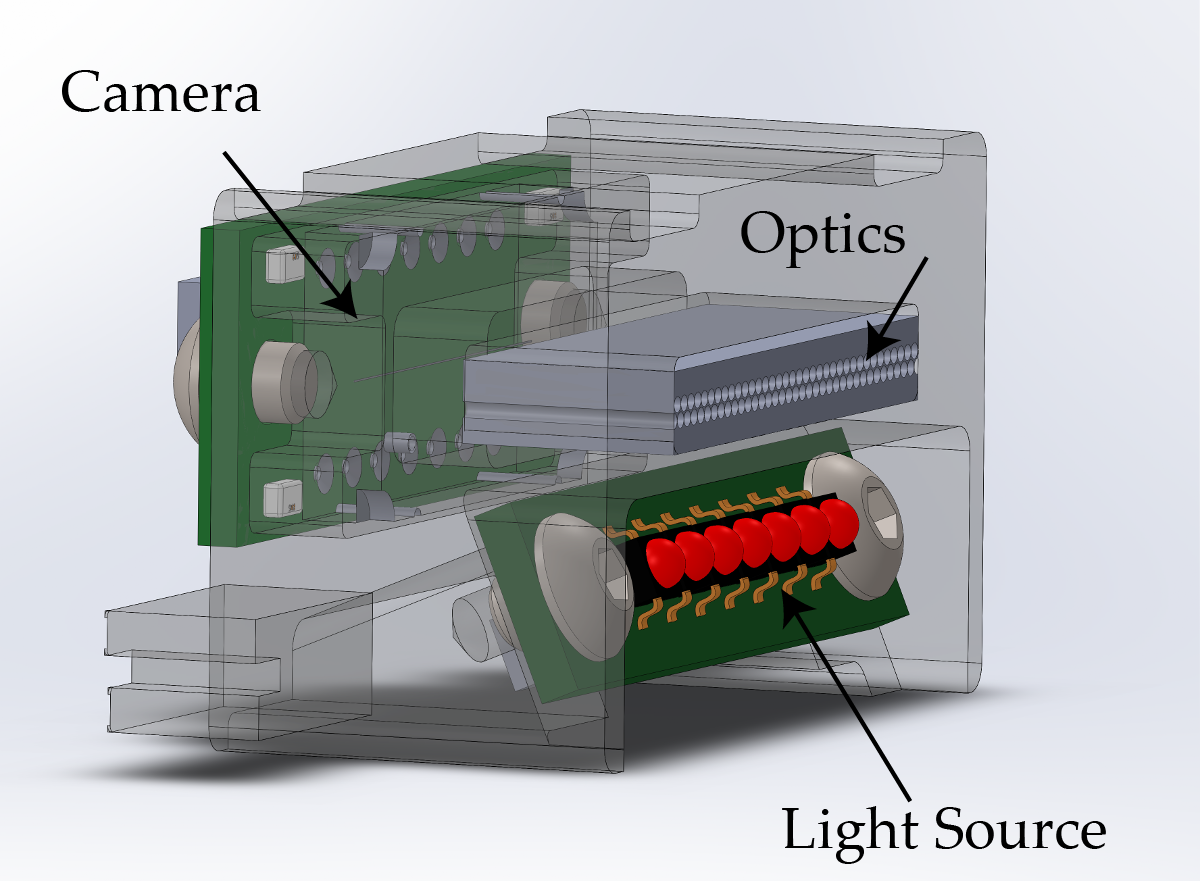It is more than a sensor, in fact it is a line scan camera. Roll-2-Roll® Sensors are more than just a typical sensor, they are one-dimensional line scan camera with integrated lighting and optics. From WPS 48 to WPS 900, all the sensors have one dimensional imaging element (pixel array), one dimensional imaging optics (the patented fiber optics) and a one dimensional integrated LED lighting (IR, UV or white light). For example the WPS 48 has 768 pixels with a pixel resolution of 0.0635 mm or 0.0025" with a total 1-D camera range of 48.768 mm or 1.92". Similarly the WPS 900 has over 14,000 pixels at a resolution of 0.0635 mm or 0.0025" with a total 1-D camera range of 901 mm or 35.47".

How does it work?
The working of the sensing system is similar to any camera based vision system. The Roll-2-Roll® Sensors act as a camera and the image captured by the camera is processed by the Roll-2-Roll® Controller. In fact the sensors by themselves do not have any intelligence, they only have the hardware (lighting, optics and imaging). The controller is the one that triggers the lighting and image capture sequence. And once the image is captured, the image is transferred and processed by the controller.
What is the advantage of such a system?
One of the biggest advantage of the system is the modularity. Modularity helps reduce upgrade cost, replacement cost and overall cost of ownership.
Reduction of upgrade cost
Since the controller is the brain behind the vision system, most upgrades can be done without changing the sensor (lighting, imaging and camera) hardware. Hence the upgrade cost just involves the upgrade of the controller which is significantly lower, especially with wide band sensors (WPS 221, WPS 440 and WPS 900).
This upgrade of the controller includes firmware upgrades to add functionality as well as hardware upgrades to increase processing speed. And both of these could be done by just swapping the controller in the field with minimal downtime.
Reduction of replacement cost
The modular design also reduces the replacement cost of the parts. Unlike the sensors with the controller built-in, the whole system need not be replaced if and when a damage occurs. Only the damage component can be replaced with significant savings.
Reduction of overall cost of ownership
For large customers and OEMs who use multiple sensors (sizes) and controllers (for different applications), the overall cost of ownership is lower since they can mix and match the sensors and controllers. A sensor and controller used for one application can be readily repurposed for a completely different application. For example, a sensor and controller used for web guiding and edge detection can be repurposed to inspect fibers. Similarly a sensor used for flag detection can be repurposed for registration mark detection. This significantly reduces the cost of ownership since the sensor and controller can still be repurposed for any application after the purchase date.
So why do we call it a sensor?
Even though the Roll-2-Roll® Sensors is actually a vision system with advanced sensing capabilities, we call it a sensor because it is so simple to use just like a sensor. We strongly believe in the quote attributed to Leonardo da Vinci
simplicity is the ultimate sophistication
We want to provide a simple solution to our customers so that they can focus on their problems rather than trying to understand a complex vision system.

